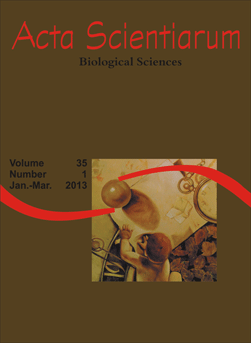<b>Conservation assumptions and development in Brazilian Cerrado</b> - doi: 10.4025/actascibiolsci.v35i1.12480
Abstract
This study reviews the debate concerning socioeconomic impacts of established protected areas on local populations. On one side, there are those who defend the idea that protected areas may assist in poverty reduction by generating alternative sources of income, and on the other hand, those who argue just the opposite, due to the eminent expropriation of the land. Thus, the relationship between protected areas and poverty is evaluated through development indexes (Human Development Index and Gini Coefficient) and by contrary assumptions. Through a disaggregated analysis method of “strict protected” and “sustainable use”, the proposal was to evaluate, in the context of Brazilian Cerrado, if the presence of protected areas has influence on the local social conditions, and which protection methods have the greatest effect. In this evaluation, it was verified that despite the heterogeneity of income distribution, the municipalities with integrally protected areas of indirect-use have higher values of human development than those of direct-use.
Downloads
Download data is not yet available.
Published
2012-07-19
How to Cite
Silva, R. de J., & Garavello, M. E. de P. E. (2012). <b>Conservation assumptions and development in Brazilian Cerrado</b> - doi: 10.4025/actascibiolsci.v35i1.12480. Acta Scientiarum. Biological Sciences, 35(1), 71-75. https://doi.org/10.4025/actascibiolsci.v35i1.12480
Issue
Section
Ecology and Limnology
DECLARATION OF ORIGINALITY AND COPYRIGHTS
I Declare that current article is original and has not been submitted for publication, in part or in whole, to any other national or international journal.
The copyrights belong exclusively to the authors. Published content is licensed under Creative Commons Attribution 4.0 (CC BY 4.0) guidelines, which allows sharing (copy and distribution of the material in any medium or format) and adaptation (remix, transform, and build upon the material) for any purpose, even commercially, under the terms of attribution.
Read this link for further information on how to use CC BY 4.0 properly.
0.6
2019CiteScore
31st percentile
Powered by 

0.6
2019CiteScore
31st percentile
Powered by 











1.png)




3.png)













